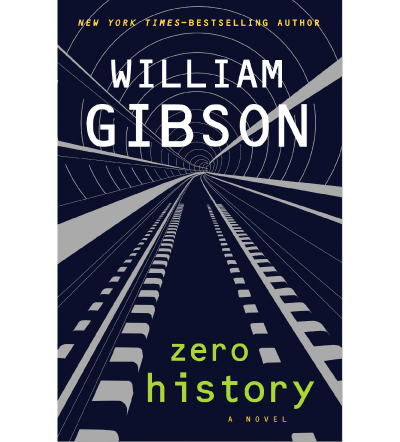
Cover art coutesy of Putnam
That old saying (and secret dictum of science fiction) “the future is now” is rarely as appropriate a descriptor as it is for William Gibson’s latest novel, Zero History (Putnam, $26.95). For the past twenty-five years, Gibson has been churning out, with a machinelike consistency, remarkable works of science fiction — all the while edging their settings backwards, closer and closer to the present.
Having established himself as one of our finest dealers of far-flung futures, Gibson’s decision to set his first novels of the new century — Pattern Recognition (2003) and Spook Country (2007) — in a future barely distinguishable from the present came as something of a surprise. Gone were the razor girls, neural uplinks and dope-smoking Rastafarian spaceship pilots that had for so long characterized his work; in their stead were viral internet footage, transnational marketing conspiracies and something akin to a 9/11 induced cultural tinnitus, the nascent whine of the old rhythms of the world unfurrowing. All of a sudden, the future felt more like the now than ever before.
Zero History marks the third, and perhaps final, installment in Gibson’s newest series. The three novels share the same near future world, as well as many of its characters, preoccupations and flaws.




 Facebook
Facebook Permalink
Permalink Digg
Digg Reddit
Reddit LinkedIn
LinkedIn StumbleUpon
StumbleUpon Tumblr
Tumblr

